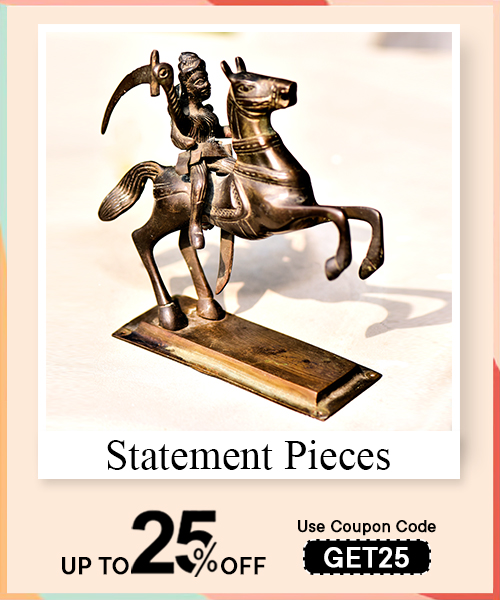Diwali, or the Festival of Lights, is a joyful celebration with many traditions. One of the most colorful parts of Diwali is making rangoli designs. These designs are made with rice, flour, and flower petals and are put on doorsteps to welcome guests and bring good luck. As night comes, homes light up with diyas and candles, showing the victory of light over darkness. Diwali wouldn't be complete without fireworks and crackers lighting up the sky, bringing joy to the occasion.
During Diwali celebrations, families make traditional dishes and sweets. These include iconic treats like gulab jamun and savory snacks, filling homes with delightful aromas. Wearing new clothes and accessories is also customary, symbolizing new beginnings and honoring the festive atmosphere.
In North India, Diwali holds profound cultural significance, deeply rooted in the legendary tale of Lord Rama and Sita. This festival commemorates their return to Ayodhya after defeating the demon king Ravana. The celebrations begin with elaborate puja rituals and prayers, where devotees worship Goddess Lakshmi, the deity of wealth and prosperity. Homes and temples are beautifully decorated with lights, flowers, and rangoli, creating an enchanting atmosphere.
During this period, families participate in age-old games, with playing cards taking center stage, symbolizing the spirit of togetherness and delight. The custom of visiting friends and relatives is held dear, as these reunions fortify connections and foster happiness during the celebratory time.
Read More:The Significance and Celebration of Ganga Dussehra in India
In South India, Diwali has unique traditions. It celebrates the legend of Lord Krishna and his victory over the demon Narakasura. This narrative sets the stage for the Naraka Chaturdashi celebration just before Diwali. Homes are adorned with marigold and jasmine flowers, adding a fragrant touch to the festive decorations.
Families come together to prepare and share traditional snacks like murukku and laddoo, fostering a spirit of community and generosity. The lighting of oil lamps plays a significant role, representing the victory of light over darkness and creating a beautiful glow throughout the night.
In East India, Diwali celebrations take on unique local flavors, often centering around the worship of Goddess Kali. The festival includes Kali Puja, where devotees engage in special prayers and rituals to honor this powerful deity. Another striking feature is the creation of alpana designs, intricate patterns made with rice flour that adorn the floors, reflecting artistic expression.
During these celebrations, families prepare a bhog, a particular offering for Goddess Kali, and then share it among friends and family. Like other regions, lighting clay lamps and enjoying firecrackers are essential elements, illuminating the night sky and adding to the festive ambiance.
In East India, particularly during the festival of Kali Puja, the worship of Goddess Kali involves several significant rituals and prayers. The preparations typically start with cleaning and decorating the puja area, often with fresh flowers and colorful rangoli designs.
The central aspect of Kali Puja is the installation of the idol of Goddess Kali, which is usually adorned with vibrant clothing, jewelry, and offerings. Devotees begin the rituals with Abhishek, where water, milk, and other sacred items are poured over the idol as a form of reverence.
The lighting of lamps is crucial during the worship, symbolizing the dispelling of darkness and ignorance. This is followed by the offering of bhog, which consists of various foods, including rice, fish, and sweets. Devotees recite specific mantras and prayers to invoke the goddess’s blessings, asking for strength, protection, and prosperity.

West India’s Diwali festivities are rich with local customs and legends. This celebration often honors Lord Vishnu and the demon King Bali, showcasing the triumph of good over evil. The region also observes Govardhan Puja and Bhai Dooj, rituals that celebrate the bonds between brothers and sisters.
Creating rangoli designs with colorful powders and flowers is a beloved tradition, adding splashes of color to homes. Families prepare and share traditional dishes like puran poli and shakkarpare, emphasizing the communal aspect of the celebrations. Notably, this region considers cows and dogs sacred, leading to special prayers and offerings for these animals.
During Diwali, a wide array of traditional dishes and sweets are prepared, each with significance and flavor. In North India, popular sweets include gulab jamun, deep-fried dough balls soaked in sugar syrup, and barfi. This dense milk-based confection often incorporates flavors like pistachio or coconut. Kaju katli, a sweet made from cashew nuts, is also a favorite.
Read More:Janmashtami: Celebrating the Birth of Lord Krishna
In South India, you might find laddoos, particularly besan laddoo, made from gram flour and jaggery, and murukku, a savory snack made from rice and lentil flour, which is both crunchy and delicious. Pongal, a sweet rice dish made with jaggery and flavored with cardamom, is also common.
East India showcases sweets like sandesh, a Bengali delicacy made from fresh paneer, and rasgulla, spongy balls made from chhena soaked in syrup. Meanwhile, in West India, you can savor puran poli, a flatbread stuffed with a sweet filling of jaggery and lentils, and shakkarpare, a lovely, fried snack.
In Nepal, Diwali coincides with the Tihar festival, known as the "Diwali of Lights." Much like in India, the celebrations are steeped in the legend of Lord Vishnu and his victory over the demon King Bali. Unique to this festival is the worship of animals—cows, crows, and dogs receive special recognition on different days, highlighting the deep connection between people and nature.
The lighting of diyas and candles made from yak butter adds a traditional touch to the festivities. Families enjoy playing Deusi Bhailo, a game involving singing and dancing that fosters community spirit and joy.
In Sri Lanka, Diwali is celebrated as Deepavali, closely following the same legendary tales, particularly the story of Prince Rama and the demon King Ravana. The celebrations involve traditional rituals and prayers in Hindu temples, where devotees seek blessings for prosperity and health.
Public spaces are adorned with lighting lamps and fireworks, creating a festive atmosphere. Sharing traditional sweets and snacks with friends and family is a cherished custom, promoting community and togetherness.
Diwali is becoming increasingly popular in the United States, especially in major cities like New York and Los Angeles. Indian American communities organize vibrant celebrations, showcasing cultural performances, music, and cuisine. Public events featuring Diwali festivities attract diverse audiences, fostering a greater understanding of the festival.
Notably, significant landmarks, including the White House, are illuminated with diyas, highlighting the growing recognition of Diwali. Furthermore, many schools and workplaces are incorporating Diwali into their curriculums and diversity programs, reflecting the festival's importance in promoting inclusivity and cultural awareness.
Modern Diwali celebrations reflect the evolving nature of traditions. The influence of social media has transformed how people share and experience the festival, with many showcasing their celebrations online. Urban areas are seeing an increase in Diwali-themed parties, where traditional customs blend with contemporary elements, bringing a fresh twist to the festivities.
Read More:Sawan Somwar Vrat: Unlocking the Spiritual Power of Shravan Mondays
As environmental concerns grow, many adopt sustainable practices during Diwali, opting for eco-friendly decorations and sparklers. Additionally, the spirit of giving has expanded, with a focus on charity and helping those in need, adding a meaningful dimension to the festival.
















